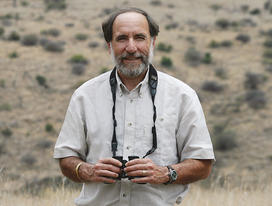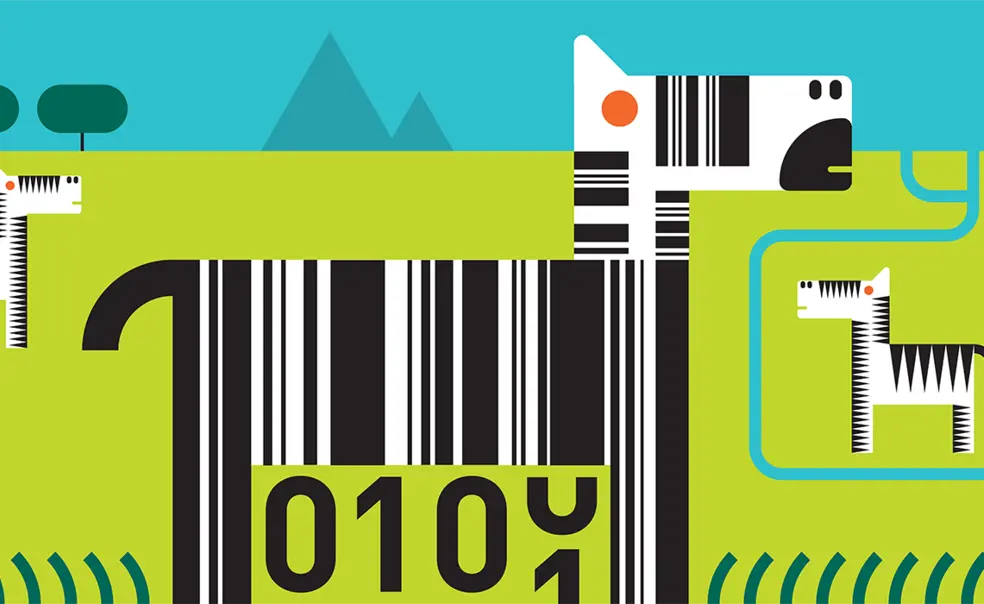Ecology and Evolutionary Biology: Counting Stripes
Zoology professor Daniel Rubenstein uses crowdsourcing to count zebras in Kenya
When behavioral ecologist Daniel Rubenstein began working in the semi-arid plains of northern Kenya more than three decades ago, some 14,000 Grévy’s zebras roamed the grasslands. Now, because of encroachment by people and livestock, only about 2,500 remain. “When a species becomes that rare, all kinds of problems develop,” says Rubenstein, Class of 1877 Professor of Zoology and director of the Program in Environmental Studies. “Animals become isolated from one another, inbreeding creeps in, and whole populations can disappear.”

First, Rubenstein needed an accurate count of the remaining zebras. “If you are going to make policy decisions and change the landscape or ask people to change their behavior, then you need to have numbers that are believable,” he says. To achieve that, Rubenstein worked with the Kenyan government to organize the first-ever Great Grévy’s Rally, a mass mobilization of people who volunteered for a two-day expedition in January to tag — virtually — as many zebras as they could.
Unlike the plains zebra, which is ubiquitous in Africa, the larger Grévy’s zebra only inhabits a 15,500-square-mile region of northern Kenya and southern Ethiopia. Traditional aerial surveys can underestimate the number of zebras, which like to shelter under trees during the heat of the day, and while spot checks on the ground can supplement those numbers, they reduce statistical accuracy. “When you hear there are 2,500 zebras plus or minus 1,000, that doesn’t give you a whole lot of faith in the number,” says Rubenstein.
For the rally, he and his colleagues enlisted about 500 citizen-scientists, ranging from middle-class city folk to nomadic tribesmen, to drive around the savannah for two days and photograph zebras with cameras that automatically logged the GPS location and time of each shot. Overall, participants logged more than 40,000 photos, of which 18,000 were clear enough to identify unique zebras by their markings. Using specially developed visual-recognition software called IBEIS (Image-Based Ecological Information System), the team could identify each animal from its stripes. “Every single stripe pattern is unique,” says Rubenstein. “They are naturally bar-coded.” By noting the number of animals sighted on the first day that were spotted again on the second day, Rubenstein and his colleagues were able to calculate a statistically accurate total number of about 2,350 animals. (Another 150 or so Grévy’s zebras survive in southern Ethiopia.)
In addition to spurring conservation efforts, the survey analyzed demographics of the herd, finding that 30 percent were infants and juveniles, a healthy proportion that shows the population is stabilizing. The survey also identified which counties had the most animals, showing that they had been pushed south from their traditional range. Working with the nonprofit Grévy’s Zebra Trust, Rubenstein hopes to encourage county officials to implement policies on livestock grazing, water use, and predator management to help restore that habitat.
Many of those officials, along with representatives from Princeton, attended the official release of the data at the Great Grévy’s Ball in Nairobi, Kenya, in September. The ball also was attended by many of the rally’s volunteers — a constituency considered crucial to increasing the number of Grévy’s zebras in the future. “Not only can they help us gather data, but they also become engaged, and become champions and ambassadors for wildlife,” says Rubenstein. “That’s very important as you try to change human behavior.”












No responses yet